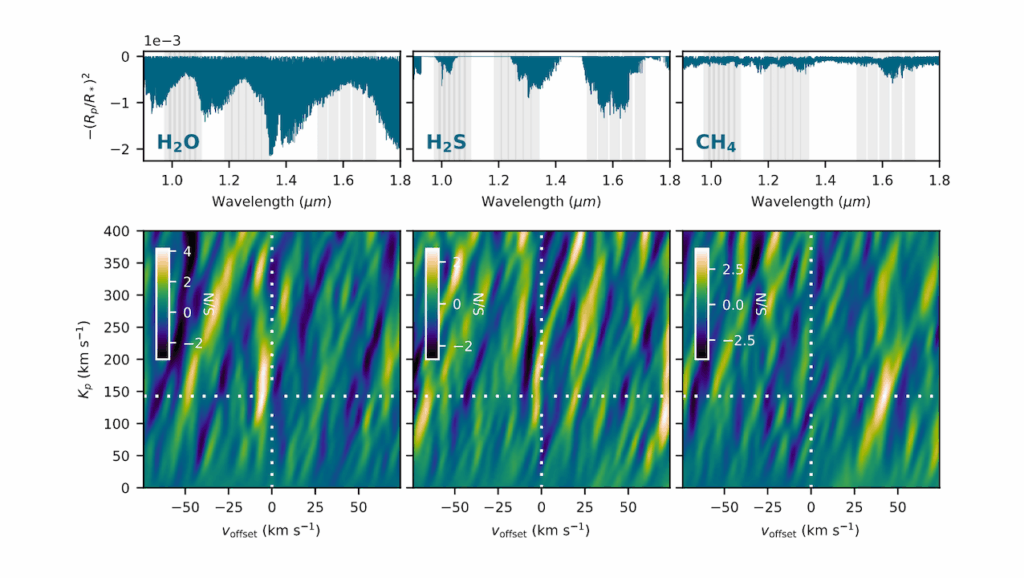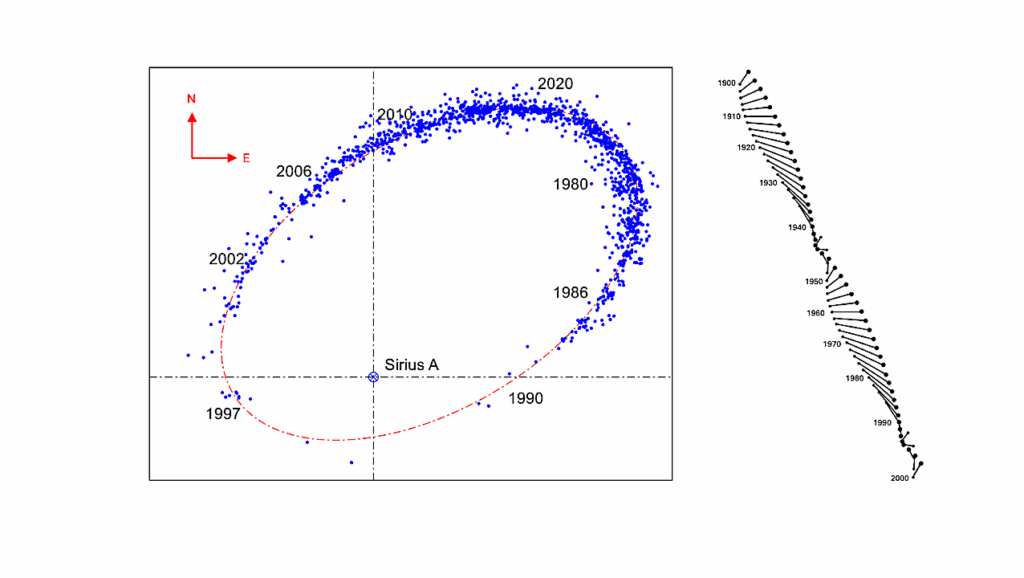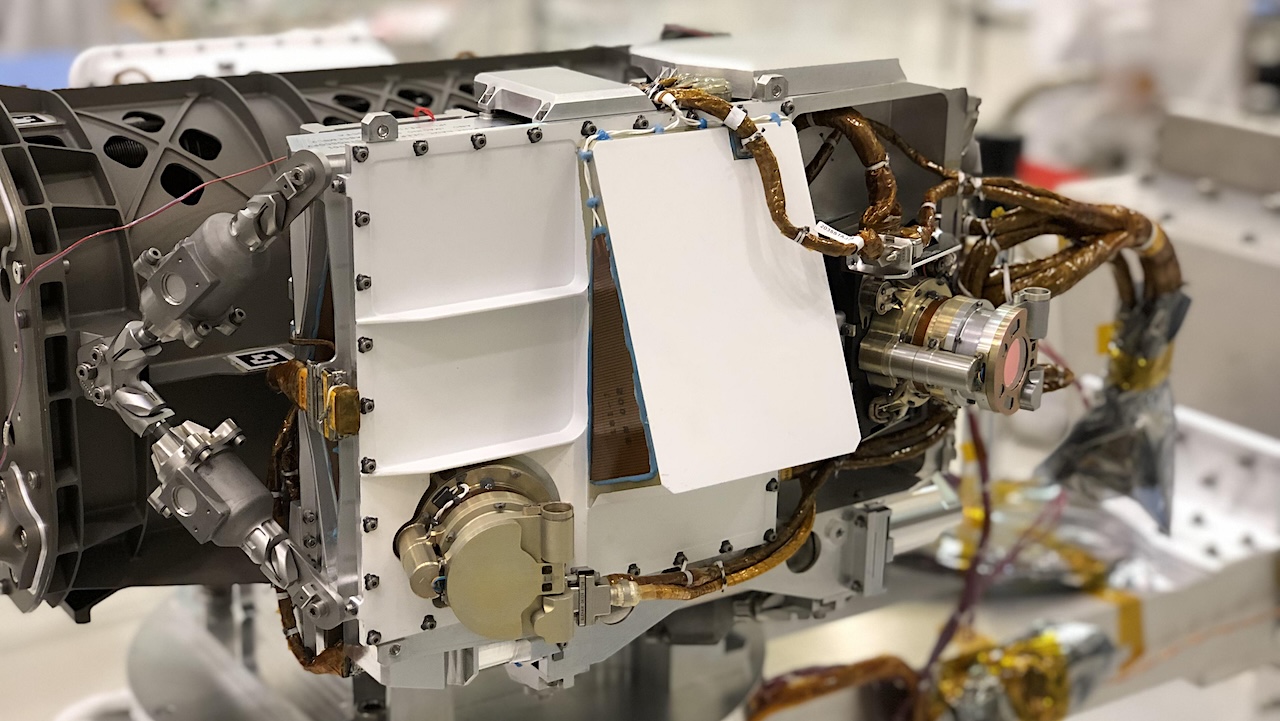Now Reading: A Firefly-inspired Model For Deciphering The Alien
-
01
A Firefly-inspired Model For Deciphering The Alien
A Firefly-inspired Model For Deciphering The Alien
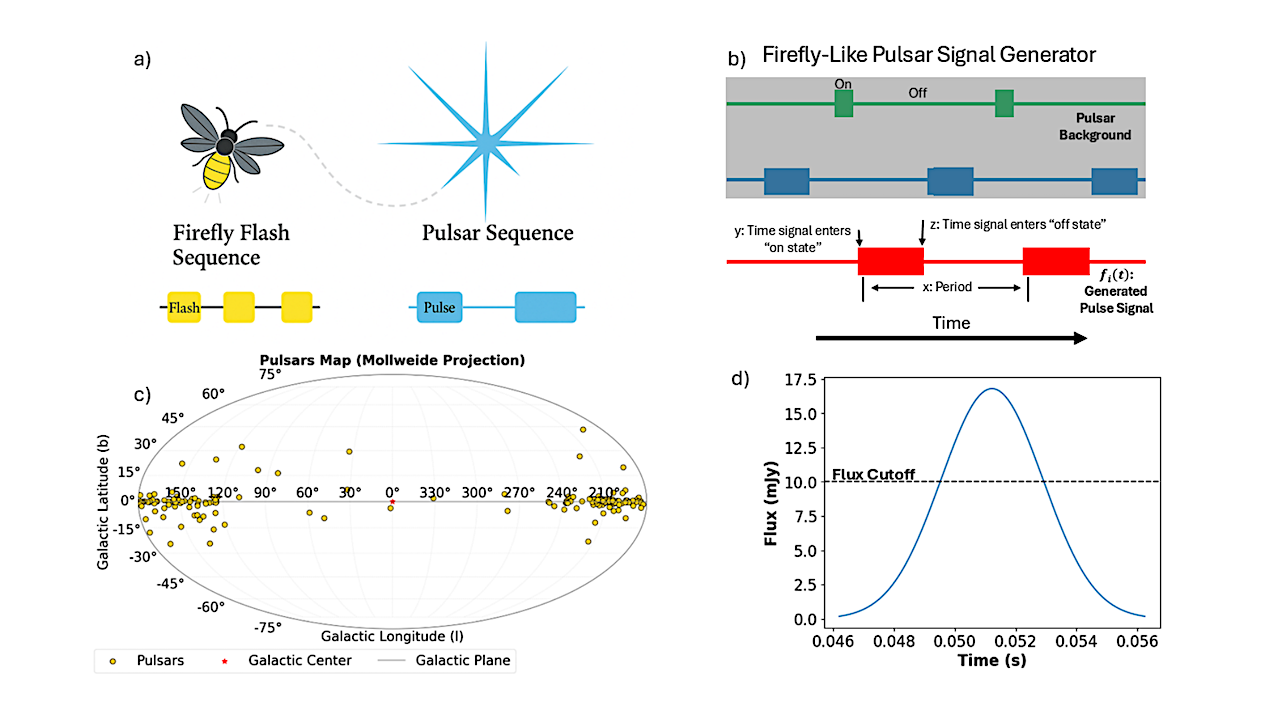
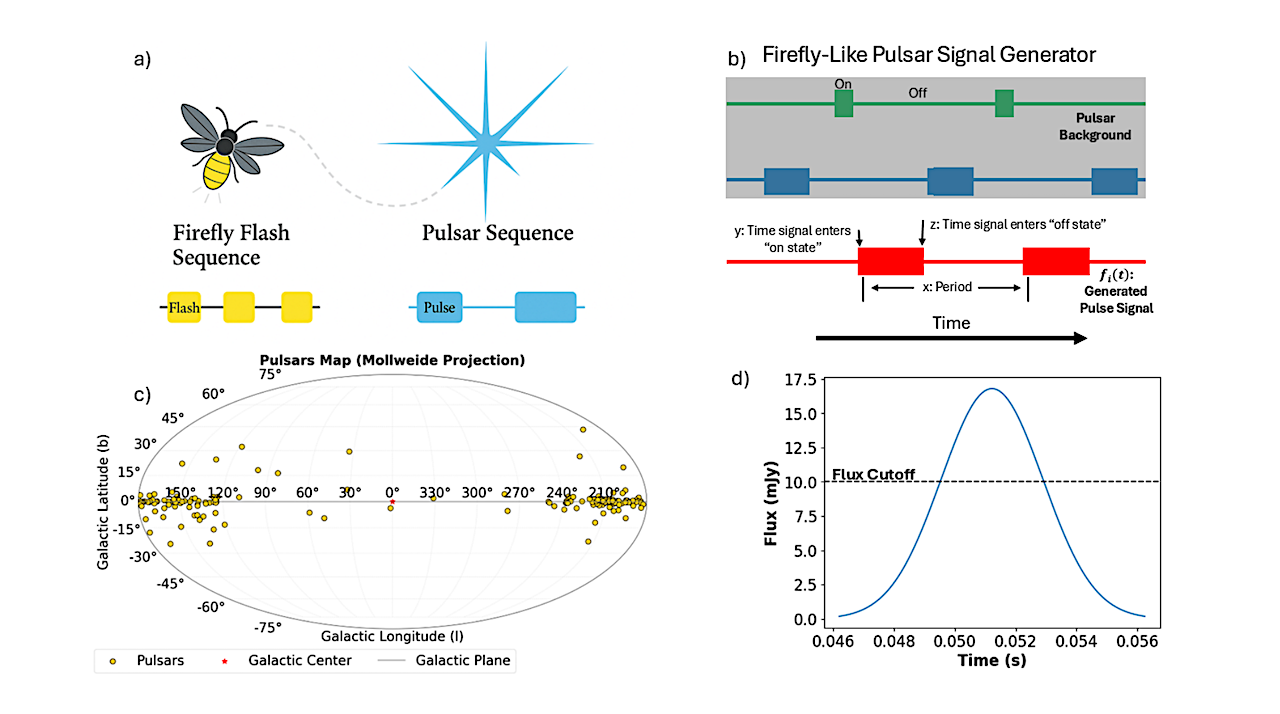
a) Illustration of a firefly flash sequence and a pulsar pulse sequence, which serves as the basis of the model discussed in this paper. b) Conceptualization of how the model creates a maximally distinct signal by minimizing the overlap of “on” and “off” sections between an artificial signal and the existing background signals. c) A Mollweide Projection displaying the galactic longitude and latitude of the 158 pulsars defining the pulsar background in the test case of this study. Background pulsars all have with mean flux densities greater than 1 mJy at 1400 MHz and are located within 5 kpc of the Earth. d) Representation pulsar pulse profile. The flux cutoff of 1 mJy determines which portion of the signal is considered “on” (above the cutoff) and “off” (below the cutoff). — astro-ph.IM
The Search for Extraterrestrial Intelligence (ETI) is, historically, a search for aliens like us, inspired by human centric ideas of intelligence and technology.
However, humans are not the only instance of an intelligent, communicating species on Earth, and thus not guide to how we might think about ETI.
Here, we explore the potential for the study of non-human species to inform new approaches in SETI research, using firefly communication patterns as an illustrative example. Fireflies communicate their presence through evolved flash patterns distinct from complex visual backgrounds.
Extraterrestrial signals may also be identifiable not by their complexity or decodable content, but by the structural properties of the signal, as currently being explored in efforts to decode communication in non-human species across our biosphere. We present a firefly-inspired model for detecting potential technosignatures within environments dominated by ordered astronomical phenomena, such as pulsars.
Using pulsar data from the Australia Telescope National Facility, we generate simulated signals that exhibit evolved dissimilarity from the surrounding pulsar population.
This approach shifts focus from anthropocentric assumptions about intelligence toward recognizing communication through its fundamental structural properties, specifically, evolutionarily optimized contrast with natural backgrounds.
Our model demonstrates that alien signals need not be inherently complicated nor need we decipher their meaning to identify them; rather, signals might be distinguishable as products of selection. We discuss implications for broadening SETI methodologies, leveraging the diverse forms of intelligence found on Earth.
Cameron Brooks, Estelle Janin, Gage Siebert, Cole Mathis, Orit Peleg, Sara Imari Walker
Subjects: Instrumentation and Methods for Astrophysics (astro-ph.IM)
Cite as: arXiv:2511.06139 [astro-ph.IM] (or arXiv:2511.06139v1 [astro-ph.IM] for this version)
https://doi.org/10.48550/arXiv.2511.06139
Focus to learn more
Submission history
From: Sara Walker
[v1] Sat, 8 Nov 2025 21:23:00 UTC (1,030 KB)
https://arxiv.org/abs/2511.06139
Astrobiology,
Stay Informed With the Latest & Most Important News
-
 012024 in Review: Highlights from NASA in Silicon Valley
012024 in Review: Highlights from NASA in Silicon Valley -
 02Panasonic Leica Summilux DG 15mm f/1.7 ASPH review
02Panasonic Leica Summilux DG 15mm f/1.7 ASPH review -
 03How New NASA, India Earth Satellite NISAR Will See Earth
03How New NASA, India Earth Satellite NISAR Will See Earth -
 04And Thus Begins A New Year For Life On Earth
04And Thus Begins A New Year For Life On Earth -
 05Astronomy Activation Ambassadors: A New Era
05Astronomy Activation Ambassadors: A New Era -
06SpaceX launch surge helps set new global launch record in 2024
-
 07Space Force plans new ‘Futures Command’ amid pressure to speed up modernization
07Space Force plans new ‘Futures Command’ amid pressure to speed up modernization













